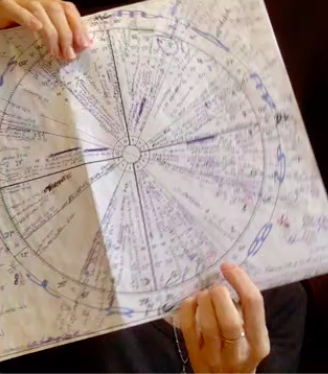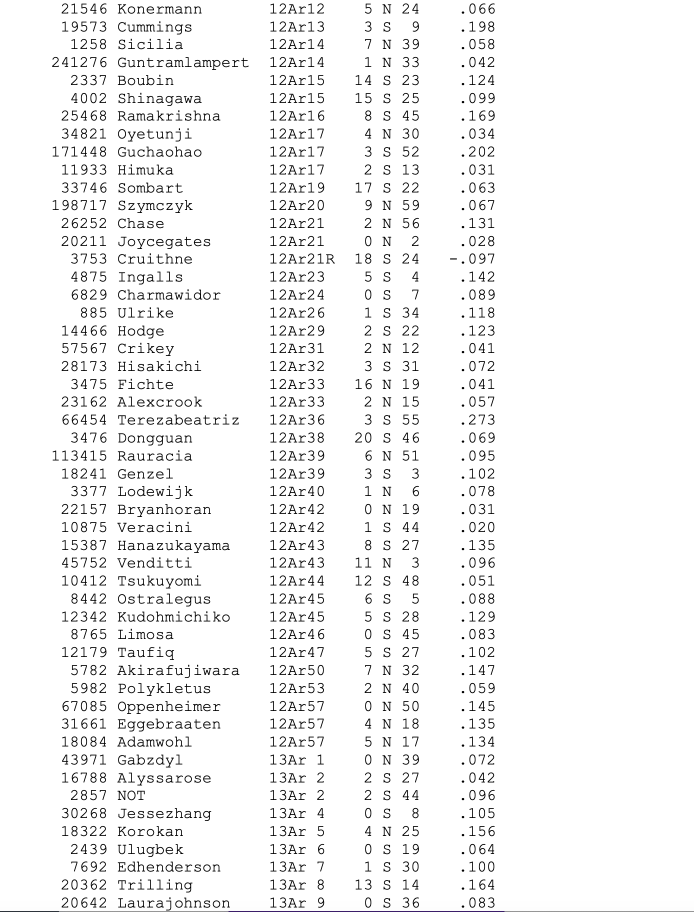Why Use Thousands of
Asteroids
for Astrology ?
Asteroids are the Future of Astrology
This is Why You Need
Thousands of Asteroids
for Serious Astrology
Career Design
Spiritual Insights
Psychological Detail
and especially
Past-Life Stories
Asteroids are indispensable for
UNDERSTANDING HUMAN CONSCIOUSNESS
Asteroids are the
Future of Astrology
Historically, it was not until January 1st 1801 that a relatively small spherical body was found orbiting between Mars and Jupiter, by astronomer Giuseppe Piazzi at Palermo in Sicily. He named it Ceres after Sicily’s original patron goddess.
Many more asteroids of varying sizes and shapes were discovered in that region of our solar system in later years, and continue to be discovered to this day! (See the video at the bottom of this page, for a surprising size comparison.)
Thousands of asteroids have predictable orbits just as the planets do. There are now several astrological software apps available for asteroid calculation, one handling the full and ever-increasing list of 25,399 named asteroids (as of June 30 2025). (See my Asteroid Software page for details.)
There are many more asteroids that have not yet been given names, being known only by a unique number-letter combination, and so are not yet conducive to astrological work.
image from the video
of A client Skype session
— just to give you an idea
This is a photo of an actual client ‘work-chart’. It includes the names of pertinent asteroids (selected to correspond with the planetary dynamics in the basic chart), that I’d found among the full list (at that time) of over 19,000 named asteroids (we now have more than 25,000!), and scribbled inside the wheel (fuzzed-out here for privacy).
I also add notes in the page margins, outside the rim, about some asteroid names and Aspect patterns, as Asteroids fill in the information gap from the planets.
I print all computer charts on A3-size paper so I can write in the names of more asteroids! And more are added in subsequent sessions.
These ‘work-charts’ are later scanned (using either Readdle’s Scanner Pro app or Apple’s Notes app, both on my iPhone or iPad —which both automatically crop to the chart’s page edges) — and then emailed to clients as .jpg files for zooming-in to my scribbled asteroid names on their own screens.
[Note: The A3 printers with full A3 flat scanners were gigantic and too heavy for me to even lift to put on the shelf! So I stuck with an A3 printer with an A4 flat scanner, using apps instead to scan the A3 pages!]
Asteroids — the ‘Body-Text’ of Your Birth Chart
Just as every author needs an entire dictionary of words, even though not every word is in the author’s book, an astrologer without access to the full set of asteroids, can miss some vital information in the ‘body-text’ of that chart!
Asteroids have been a part of my life, and my research, since the mid-1980s.
And since 1993, I’ve been compiling Asteroid files into more than 300 specific categories (and categories within categories). This provides more comprehensive access to the asteroids that explain the themes in your chart, as they emerge during my prep research for you, and later in our dialogue together.
Asteroids are indispensable. They are the body-text of the birth chart, of any type of astrological chart. They fill in astonishing details, relegating the planets to being simply chapter headings.
Is there an art to this? Yes. As with all facets of astrology, working with asteroids is a skill. But it can be acquired. And asteroids can be used with different empheses, depending on the type of astrology charts they are used within.
I now work with the entire list of Named asteroids available for astrological work — again, that’s currently 25,399! (Updated monthly by Mark Pottenger for his CWAsteph Asteroid App.)
My decades of research in this area have involved several tools and a number of talented colleagues in other fields, whereby all results could be verified and cross-checked.
I’ve been able to discover how asteroids play a large part in human consciousness and personal evolution, being also far more significant for our human evolution than what has been realised in scientific circles to date.
. . . A book (from my Astrology & Mind series) will be on the way before long. And a series of courses on the Asteroids as part of my shorter online courses. But, below, you will find more information about the marvel of these rocks in space.
“Thanks for the session yesterday. It was so magical and amazing and all made so much sense to me. It was like a whole world opened up before me. You are so wonderful to watch discussing the asteroids. You can see how much love and passion you have. It’s beautiful. You are truly gifted in what you do. I’m so glad we have crossed paths.”
Busting Asteroid Myths!
Busting Myth #1 :
The Feminine Principle? . . . Asteroids are NOT the ‘feminine principle’!

Attila the Hun, 5th century AD
This misunderstanding came about due to the computer-generated astrology charts that could initially only show on the wheel either four or six of the first asteroids to be discovered.
These asteroids, coincidentally, all happened to be named for female deities. But now we have more than 25,000 named asteroids that astrologers can use in their work, including Attila (the Hun) — definitely not the feminine principle!
Asteroids are now named for just about anything, as I will explain in a moment. (And many astrologers still think the asteroids are primarily named for mythological deities, so I guess that’s Myth #3!)
Busting Myth #2 :
Too Small? . . . If it’s orbiting the sun, it matters!
Some astrologers are of the opinion that size constitutes influence in the solar system.
I have one word for them: Pluto.
Pluto, way out in the back stalls of our solar system, is a tiny itty-bitty little body, originally probably a moon before it was knocked into its present wildly-dipping orbit of the sun; and sadly, no longer designated as a planet.
Yet, the electromagnetic effects and frequencies such as the radio waves from Pluto and it’s orbit (space is not a vacuum!) profoundly affect our brain chemistry.
Asteroids are smaller than Pluto, but can also have astounding effects on your psyche. Their own orbital positions are of course unique. Neglecting their influence due to size is like dismissing the piccolo flute in an orchestral piece because it’s a small instrument — those higher pitches are necessary for dramatic effect.
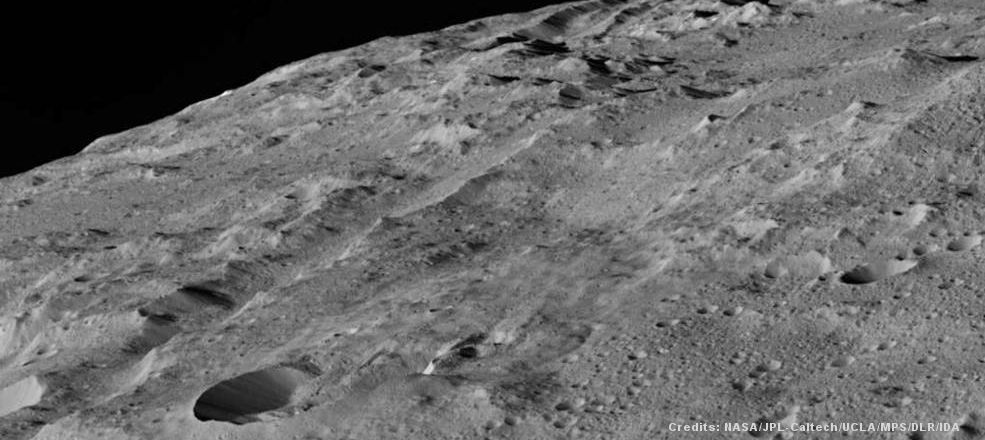
So,
What Are
Asteroids ?
Sometimes termed minor planets, asteroids can vary in size from 933km (580 miles), the diameter of Ceres (officially now referred to as a ‘dwarf planet’, since 2006), down to the size of comets, and even rocks of 2 metres (6 feet) in diameter.
In fact, there is little difference between an asteroid and a comet: the main difference being their orbital paths, as comets swing wildly close to the sun and then way out to the back stalls of the solar system. (Comets have been redefined by the proponents of the Electric Universe model, especially by those from the Thunderbolts Project.)
Their mineral compositions vary widely,
as not all of the asteroids have had the same origin, some having possibly arrived from outside
our solar system millions of years ago.
So, contrary to popular belief,
asteroids may not necessarily be
fragments of a once-existing whole planet.
There are currently two conflicting hypotheses presented by astrophysicists today :
NASA (the official mainstream view) describes asteroids as “rocky fragments left over from the formation of the solar system about 4.6 billion years ago”.
In other words, pieces of debris left over from the (possible) supernova explosion that may have created our solar system.
These pieces of rock are largely orbiting between Mars and Jupiter (where the Titius-Bode Law indicates there should be another planet), and which apparently could not bond into a single planet-sized body during the early formation of our solar system as the gravitational field of Jupiter was too strong at that location when pulling against that of the Sun.
Electric Universe proponents present an alternative view (which does not see the sun as a nuclear furnace).
They describe asteroids (and also comets and meteoroids) as being the result of ‘machining’ from huge electrical discharges on the surface of planets, especially Mars, which had shot fragments of the planet’s surface out into space.
You may find the Space News videos interesting on the Thunderbolts Project YouTube channel, especially their episodes on comets and asteroids. There you will find the most vocal people, of many scientific persuasions, including astrophysicists and electrical engineers, who propound this new view of the universe. (Be warned! There is a rabbit hole of wonderful stuff on this refreshing view of the cosmos on YouTube and the Thunderbolt Project team’s accompanying sites!)
My Initial Inspiration
My first source of asteroid inspiration came from the mysterious glyphs of the first six asteroids in the astrology computer software I was using in 1986. I began to investigate them through their mythology stories, being especially fascinated with Hygiea, still an important asteroid in my work today.
Soon after, also in 1986, the inspirational Asteroid Goddesses book by Demetra George was published (I still have a personally signed copy of her first edition).
And in 1995, Jacob Schwartz‘s book, Asteroid Name Encyclopedia became available, covering some 4,000 asteroids. This latter book opened me to the many possibilities for the use of asteroids that were not named for classical mythological characters.
I was aware of the earlier Dictionary of Minor Planet Names by astronomer Lutz D. Schmadel, but its price had been out of my reach at the time. I now realise that the position of the asteroid #2234 Schmadel (named for Lutz) in my own birth chart is right next to my Chiron’s position, so is an important clue to my life’s work! (Asteroids never lie!)
In the mid-1990s, I began to buy small sets of asteroid computer calculation files from Mark Pottenger (for his CCRS astrology chart software) in the USA — asteroids I’d hand-picked from my investigation of Jacob Schwartz’s book.
The asteroids were working marvellously in my clients’ charts! And I became ever-more fascinated with exploring their possibilities.
As each asteroid has its own orbital frequency and electrical charge, and exact distance from the sun (more on this in one of my forthcoming books), I believe each one uniquely affects all nervous systems in subtle ways. The exact effect will depend on the rest of the patterns in the individual astrological birth-chart.
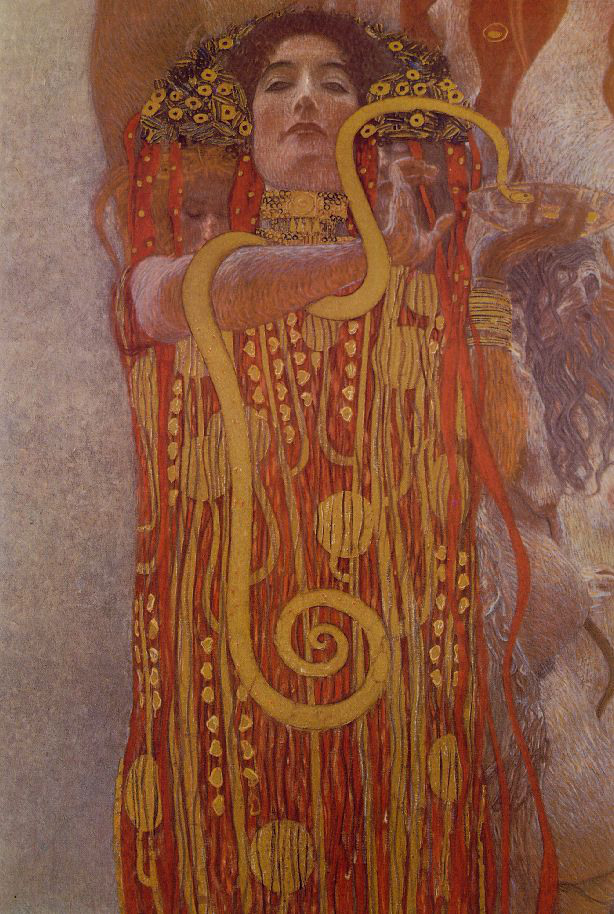
Hygiea, Greek Goddess of Health & Healing
(detail of the painting ‘Medizin’ by Gustav Klimt, 1900)
Asteroid Name Categories (for starters)
I have now created more than 300 specific category files!
Here is a general snippet to show you the diversity:
- places (countries, cities, towns, rivers, lakes, mountains, volcanoes);
- people (both historical & extant);
- spiritual/religious (‘mythical’) themes from many cultures;
- organisations;
- professions;
- rock bands / musicians;
- actors / film directors;
- artists;
- writers;
- scientists;
- abstract concepts/philosophies;
- virtues;
- emotions;
- foods;
- sea creatures & shells;
- plants & flowers;
- colours;
- politics;
- universities;
- company brands;
- car brands;
- mundane objects;
- birds & animals …
… even a Pandabear (#263251) !
So What Do Asteroids Do for an Astrology Chart?
. . . If astrologers are not using asteroids, they’re guessing !
If you are a musician, for example, with a lack of confidence in your own creative talent, finding links in your necessarily Venus-laden chart to asteroids such as ‘Jimmypage’, ‘Rolling Stones’, ‘Santana’, etc, can assist you to realise you are destined to follow these icons of Rock music history (not to forget the asteroid ‘Rocknroll’!) And, yes, as a prior professional rock singer and musician, these and other similar asteroids are strongly placed in my own chart.

In another case, as a classical musician, you may have an abundance of classical musicians triggering your chart, all making significant aspects within the particular geometry of your entire chart.
This works for most professions.
Yet, asteroids can help with any type of interpretation, whether practical, psychological, spiritual, career-based, mundane, even financial. They can also be used with skill in Electional Charts, Horary Charts, Relocation Charts, even Cosmobiology. And, as I’ve found through my own research, they are superlative for relevant Past-Life information.
Each planet is simply general on its own: Venus, for example, can relate to your personal relationships, your attitudes to the Arts (and this is all of the Arts), to the notion of fairness (the Law), to balance (physical, numerical as in accounting, colour balance as in design, or healing, etc). The rest of the chart can give us some clues; but, without asteroids, the real detail is missing.
Asteroids in the birth chart have always proven to resonate with their namesakes, as do the planets in our solar system with their own mythological themes. (I will explain this phenomenon in detail in one of my forthcoming books which is focused entirely on asteroids.)
What this means for you is that asteroids
fill in the gaps of information only
suggested by the planets.
There are many life-themes that can be assisted through asteroid analysis. Also, past-life issues, as subconscious mindsets, are normally involved in any area of your life, and are included in my Astrology consultations where relevant (another facet of my research). I see myself more these days
as an astro-archaeologist!
How Many Asteroids Can Be Used in One Chart ?
Cameo of a part-page among 312 A4 pages
of the Zodiac list of asteroids for A birth-chart.
Shows asteroid ID Discovery Number, Name, Zodiac position, Declination, Speed.
Answer: As many as the astrologer can handle, to relate the unfolding story or relevant stories!
I have used up to 200 in a lengthy in-depth session, or from multiple sessions. After my own past-life investigations, I had a chart that was completely filled with relevant asteroids — and I mean an entire A4 sized page was covered (slightly larger than US Letter-size paper), not just the wheel!
I now print all astrology charts on A3 sized paper (slightly larger than US Tabloid size) so I can fit more asteroids onto the wheel without cramping them! This is also handy for later Progress Sessions or extra InnerView sessions where an entirely new set of asteroids may need to be added to the same chart to cover a new personal or Past-life theme.
Asteroids also work in Synastry and Composite relationship charts, often revealing specific long-term past-life connections and present potentials between individuals (professionally or romantically).
Once you have a session with asteroids, your astrology chart will seem vague and empty without them!
Using Asteroid Symbols/Glyphs in the Chart?
Most astrology software programs these days will display the glyphs of only the first 4 or 6 discovered asteroids on the graphic computer chart, for screen or printing. You can turn these on or off. (Astro Gold’s Mac OS software version now incudes around 71 asteroids that can be selected and placed in the chart wheel via their glyphs. Clicking on an asteroid glyph on the chart wheel will pop up its name and coordinates.)
The only asteroid glyphs I regularly use on my clients’ charts are those of the first 6 discovered asteroids. I hand-write the rest in by name, radially, also trailing their degrees and minutes, to visually show their position on the wheel.
Try to find a wheel design that gives you lots of open space in the centre for writing in the asteroids (or, alternatively, write them radially outside the wheel, but I write notes there). You won’t be able to use aspect lines at the same time due to lack of white space there once you have heaps of asteroid names written in.
Decades ago, I used the Solar Fire program’s Wheel Designer to create a wheel with lots of open space at its centre outside the much-reduced House Number ring, and I’ve been able import that wheel into Astro Gold on my Mac! But I still have to print the charts on A3-size paper to scribble in all the asteroids. I’m thinking I may need a wall-sized whiteboard pretty soon!
There are several reasons
for hand-writing asteroid names:
- We do not have widely accepted glyphs for all other asteroids, and some don’t have glyphs at all.
- There are so many asteroids available to us now for astrological use, that we would never be able to remember all the glyphs, if they had them! That would be a lifetime study in itself. A better use of your time and brain-power would be to associate meaning to as many asteroids as possible and file them in categories you can use for your work (time and an accumulation of client sessions help us to remember these associations!).
- It is vital that your clients see the names of the asteroids you’ve added to their charts. The session will make more sense to them when they’re looking at the chart while re-listening to the live-recording you’d made for them during their session. If you have explained everything clearly, they will start to see the patterns for themselves.
- Using the actual names helps to demystify what should be a scientific process, if you want your clients’ psyches to accept your appraisals. Understanding leads to enlightenment.
- On contemplating the actual chart, your clients may later have revelations about what those asteroid names can mean for them currently within a context they hadn’t seen during the session. Associations can be personal, which is why you should always do chart appraisals with the client present (face-to-face or via the net) for live feedback so you can work the chart together, and offer a higher expression for some asteroids within the context of the chart and your client’s current level of evolution.
Seems Like a Lot of Work—
Are There Benefits for the Astrologer?
Yes, there are a number of benefits, even though it takes quite a lot of extra time to research relevant asteroids in a birth-chart — and this is why not many astrologers around the world work with large sets of asteroids.
But it’s astonishing what you can see when you have the fullest list available — start with your own chart!
Some astrologers work with only short lists of their favourite asteroid groups for every chart they prepare (even though most astrologers ignore them altogether) — but this is like trying to use a dictionary or encyclopaedia with 99% of its pages torn out!
Plus, it is important to consider that not all asteroids will resonate in every chart. Using your favourite short list of asteroids that are not making tight aspects to planets or Sensitive Points, etc, will lead you astray in your interpretation and makes it impossible to synthesise the data in the chart!
Apart from a richer evaluation of your clients’ charts,
the addition of asteroid information can:
- deepen your work in the process of assisting your clients, and so becomes much more rewarding.
- improve your intuition as an astrologer by taking the guess-work out of chart interpretations, and through validating your own intuitive hunches as you probe for clues among the asteroid files.
- help you gain an almost visceral experience of your client’s life, inner and outer, far removed from the repetitious suppositions of text-book astrology!
- draw you into the realms of history, legends, strange mythologies, politics, geography, zoology, philosophies, the arts, sciences, a multitude of religions, languages, and various other facets of worldly knowledge, enriching your personal view of our planet and its wondrously diverse people. This is such a fabulous bonus, when you take the time to research the asteroids that your clients’ charts provide!
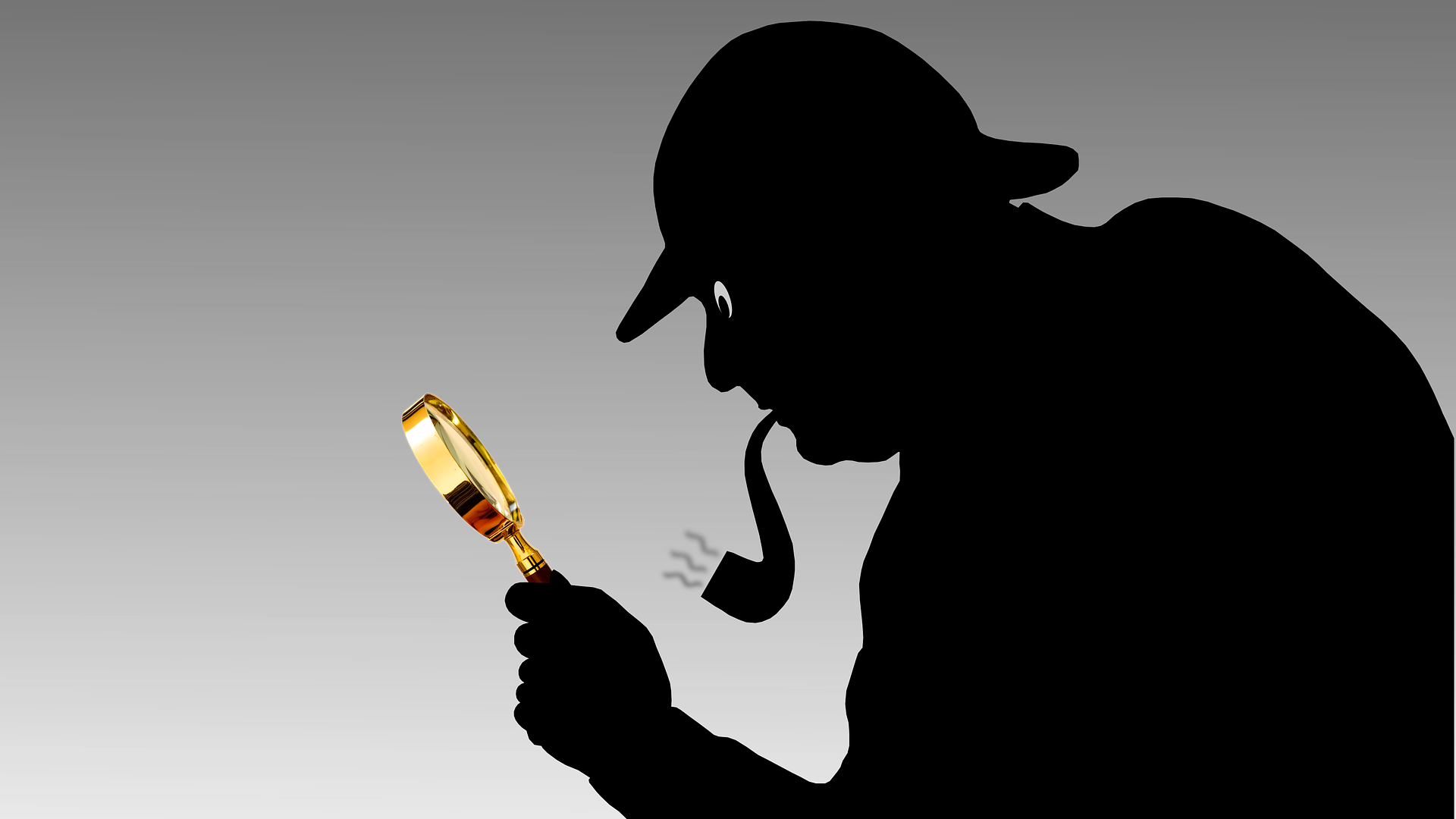
Sherlock & Holmes
are both asteroids
So are Doctorwatson
& Moriarty!
As an astrologer’s client, when you can see an asteroid with a pertinent name in your own chart, you are also able to relate more easily to any associated information being imparted to assist you.
This actually makes the work easier for your astrologer, as this helps to negate any subtle sabotaging resistance you may be harbouring; and it also helps to dissolve the ‘mumbo-jumbo’ reputation that astrology had gathered, sadly, in the 20th century.
We astrologers no longer need to look like psychics (not that there is anything wrong with that!) — astrology needs to be appreciated as a rational science so that it can be respected and made more easily available to almost anyone, and should be!
My philosophy is:
Trust your intuition,
but back it up with data!
Asteroids can provide a richer understanding of ‘mind’ to empower the astrologer further through this fascinating system, a bio-science of resonant frequencies
If you are astrology-savvy, use this button
to buy your personal list of more than
25,000 Named Asteroids
A wonderful video, animated by
Alvaro Gracia Montoya,
which really brings the variations in asteroids’ sizes into perspective.
How many of these asteroid names
do you already know?

